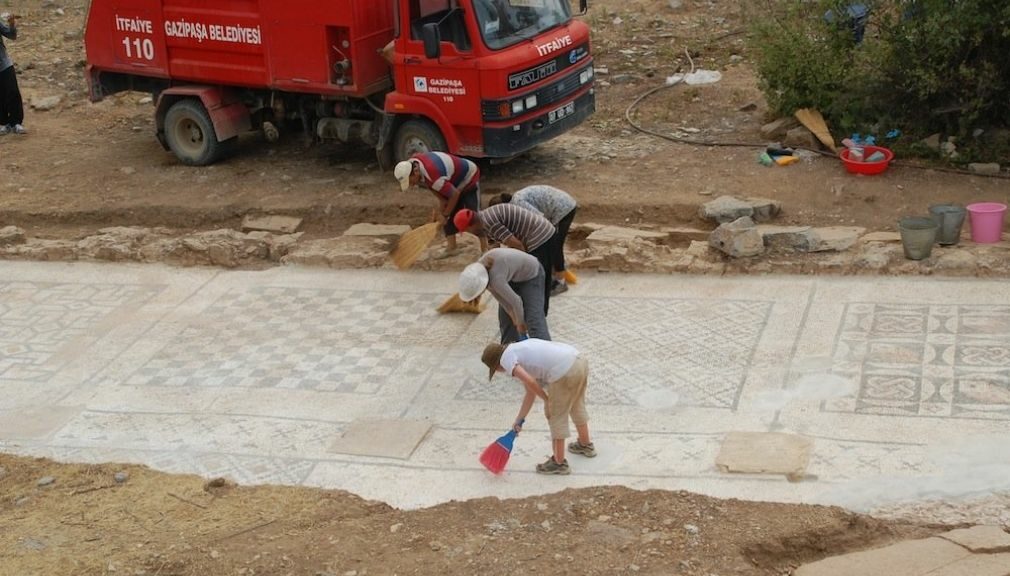In a captivating revelation down in southern Turkey, an enormous Roman mosaic adorned with intricate geometric patterns has surfaced beneath what was once a farmer’s humble field. This spectacular find offers a glimpse into the expansive influence of the Roman Empire at its zenith.
A Soak in History
Michael Hoff, the mosaic maestro and art historian from Nebraska University, took the lead in excavating this historical marvel. The mosaic, once gracing the floor of a bath complex, hugs a 25-foot-long pool, evoking images of ancient Romans enjoying a leisurely dip under the open sky.
Hoff estimates that this extraordinary discovery dates back to the third or fourth centuries, boasting a staggering expanse of 1,600 square feet—equivalent to the size of a cozy family home. Reflecting on the find, Hoff expressed his sheer astonishment, admitting, “To be honest, I have completely bowled over that the mosaic is that big,” during an interview with BBC.
Unearthing the Past
The journey to this archaeological revelation began in 2002 when Purdue University classics professor Nick Rauh strolled through a freshly plowed field near the ancient city of Antiochia ad Cragum in southern Turkey. The plow had unearthed fragments of mosaic tile, signaling the hidden treasure below.

Rauh, in awe of the potential significance, sought counsel from fellow archaeologists, including experts at the local museum in Alanya, Turkey. Unfortunately, due to budget constraints, only a fraction of the mosaic was excavated at the time, leaving the rest undisturbed.
Resuming the Quest
Fast forward to the present, armed with a renewed archaeological permit, museum archaeologists extended an invitation to Hoff and his team to resume the excavation. Last year marked the commencement of their efforts, revealing approximately 40 percent of the mosaic in pristine condition, as highlighted in a university video documenting the dig.
The uncovered floor unveils a mesmerizing display of large squares, each boasting distinctive geometric designs against a pristine white backdrop. From starburst patterns to intertwined loops, this mosaic stands as the largest of its kind in southern Turkey, challenging previous perceptions that deemed the region as peripheral to the Roman Empire.
A City Shaped by Rome
The existence of this colossal mosaic hints at the profound influence of the Romans on Antiochia ad Cragum, a city founded in the first century. Previous assumptions about the city’s connection to the Roman Empire are reshaped by the presence of Roman features such as bathhouses and markets.
Hoff’s dedicated team, not content with just one remarkable discovery, has also been delving into the remnants of a third-century Roman temple and a bustling street adorned with colonnades and shops within the city.
Future Excavations and Public Revelation
As the researchers gear up to return with students and volunteers, Hoff envisions a grand plan—to construct a protective wooden shelter over the entire mosaic, allowing public access to this archaeological wonder. The aim is to provide a unique opportunity for visitors to step back in time and witness firsthand the grandeur of this ancient Roman masterpiece.
In conclusion, the unearthing of this colossal mosaic beneath a simple farmer’s field not only expands our understanding of Roman influence but also invites us to marvel at the intricate artistry that once graced the floors of an ancient bathhouse. As we await the completion of the excavations, the anticipation builds for the day when this historical gem is unveiled for public appreciation.



